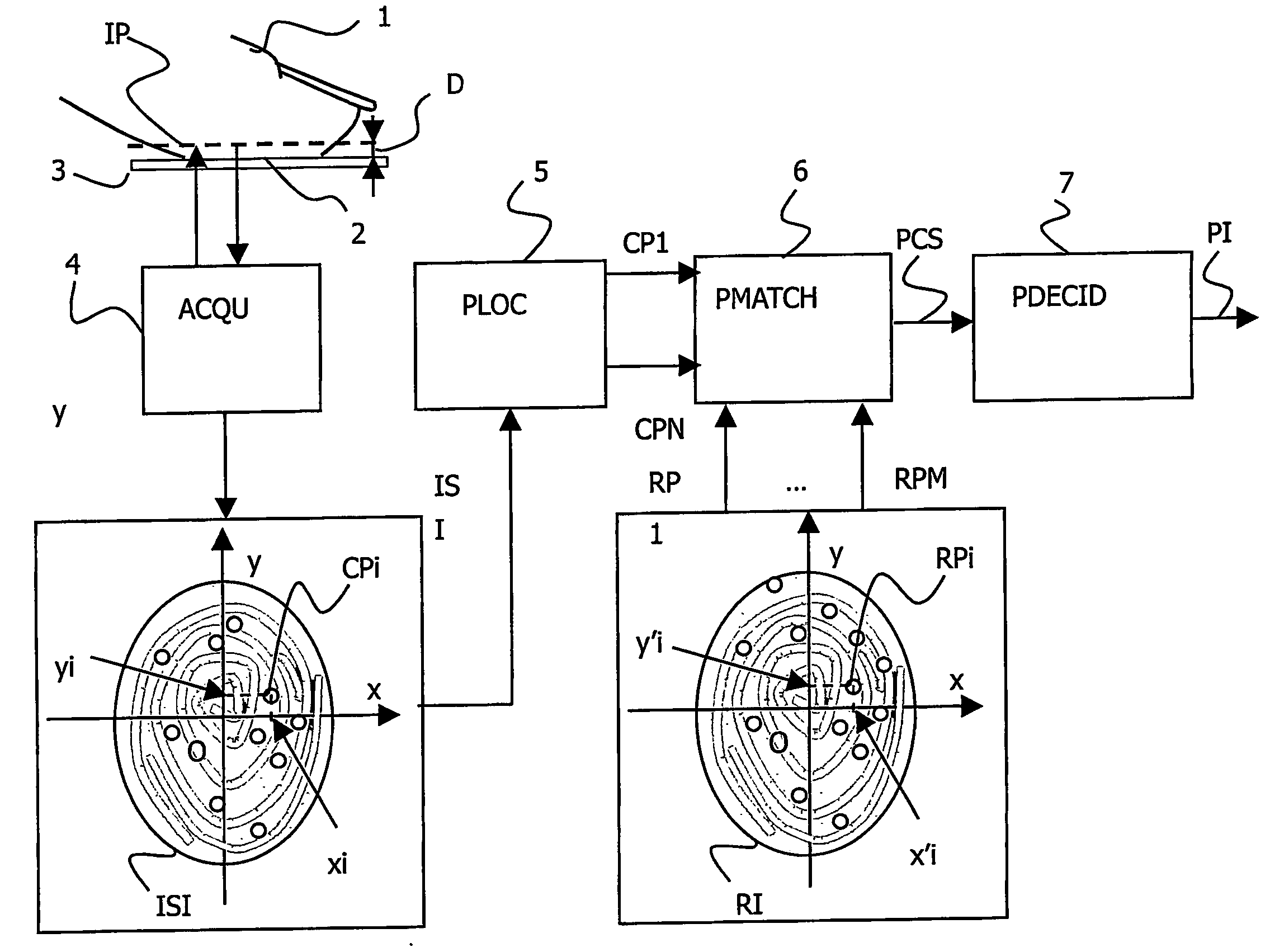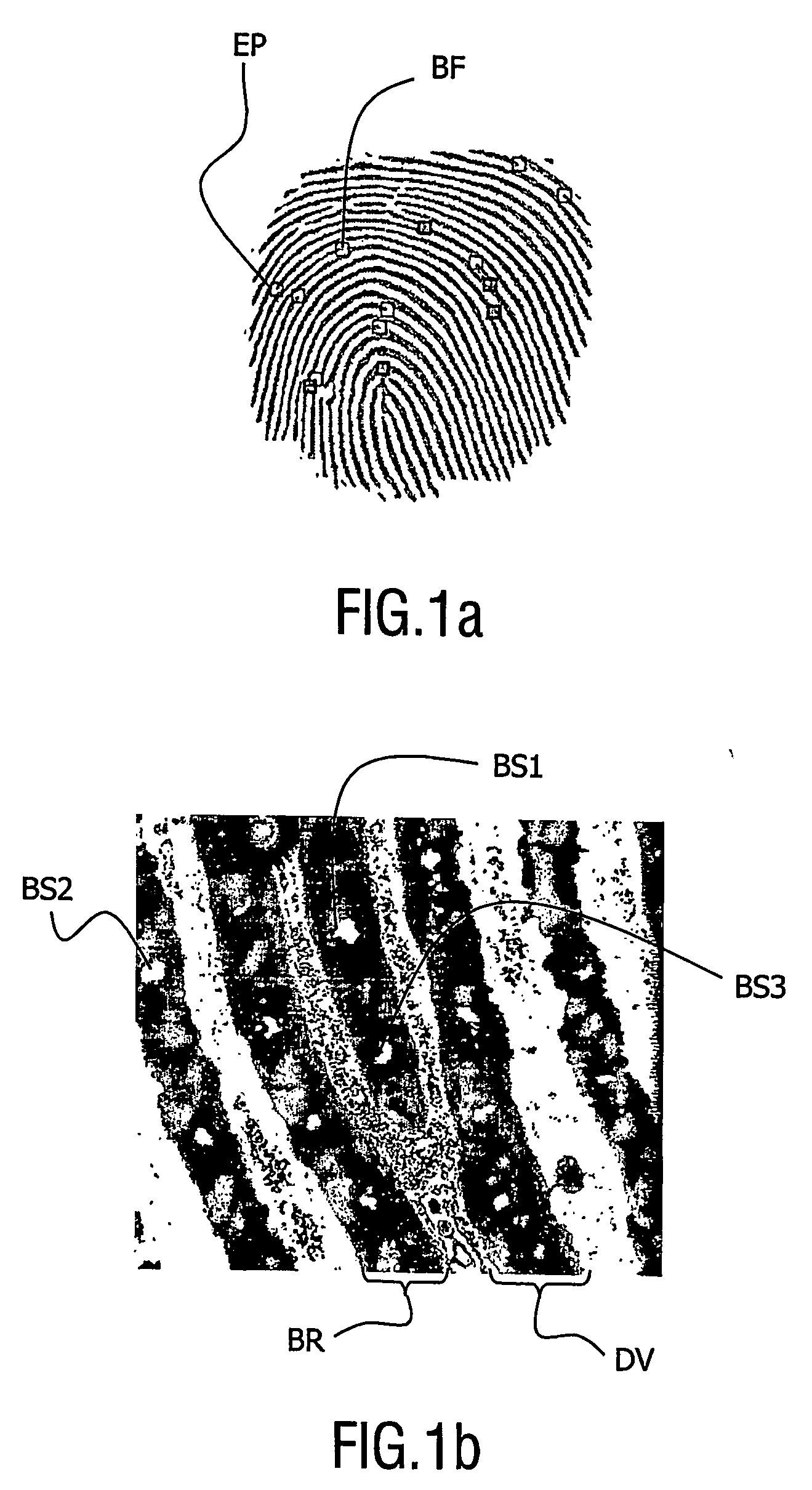Biometrical identification device
a biometric identification and fingerprint scanner technology, applied in the field of biometric identification devices, can solve the problems of non-zero false accept and false reject rate of biometric identification systems, hard retention of sweat pore information, and inability to distinguish between finger and well-created dummies. , to achieve the effect of more reliable and more resistant to fraud
- Summary
- Abstract
- Description
- Claims
- Application Information
AI Technical Summary
Benefits of technology
Problems solved by technology
Method used
Image
Examples
first embodiment
[0047] In the invention, said location means 5 are intended to locate candidate sweat pores independently from any other feature of the fingerprint like for instance fingerprint macrofeatures. The location means 5 for instance implement a thresholding technique in order to extract the candidate sweat pores from the darker background. Such a thresholding technique keeps the pixels of the image ISI, which are greater than a predetermined contrast threshold, while forcing to zero the pixels whose values are less than said predetermined contrast threshold. Such a technique, well known to a person skilled in the art, leads to a binarization. A binary image is produced. An appropriate value of said contrast threshold is empirically fixed, so that most of the bright spots corresponding to actual sweat pores are kept, while most of the bright spots corresponding to false alarms are rejected. It is to be noted that the use of thresholding is made possible by the fact that the isolated bright...
second embodiment
[0056]FIG. 6 presents in a functional way the biometrical identification device in accordance with the invention. Said device further comprises macrofeature location means 30 for locating macrofeatures of said fingerprint ridges. Said macrofeature location means 30 for instance comprise thresholding sub-means for binarizing the intra-skin image ISI. A binary intra-skin image BISI is obtained. It should be noted that aid thresholding sub-means involve the same kind of technique as the one used by the pore locations means 5. Consequently, the thresholding sub-means can advantageously be applied once to the intra-skin image ISI and the same binary image BISI be used by both pore location means 5 and macrofeature location means 30. In this case, the binary intra-skin image BISI is sent to the pore location means 5.
[0057] It should be noted that contrast irregularities of the ridges and valleys may induce some errors when thresholding the intra-skin image. Consequently, the location of f...
PUM
 Login to View More
Login to View More Abstract
Description
Claims
Application Information
 Login to View More
Login to View More - R&D
- Intellectual Property
- Life Sciences
- Materials
- Tech Scout
- Unparalleled Data Quality
- Higher Quality Content
- 60% Fewer Hallucinations
Browse by: Latest US Patents, China's latest patents, Technical Efficacy Thesaurus, Application Domain, Technology Topic, Popular Technical Reports.
© 2025 PatSnap. All rights reserved.Legal|Privacy policy|Modern Slavery Act Transparency Statement|Sitemap|About US| Contact US: help@patsnap.com



